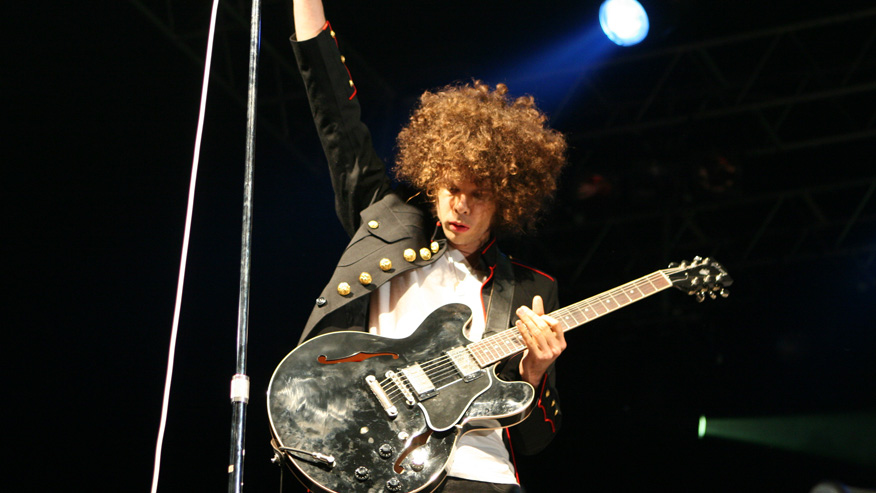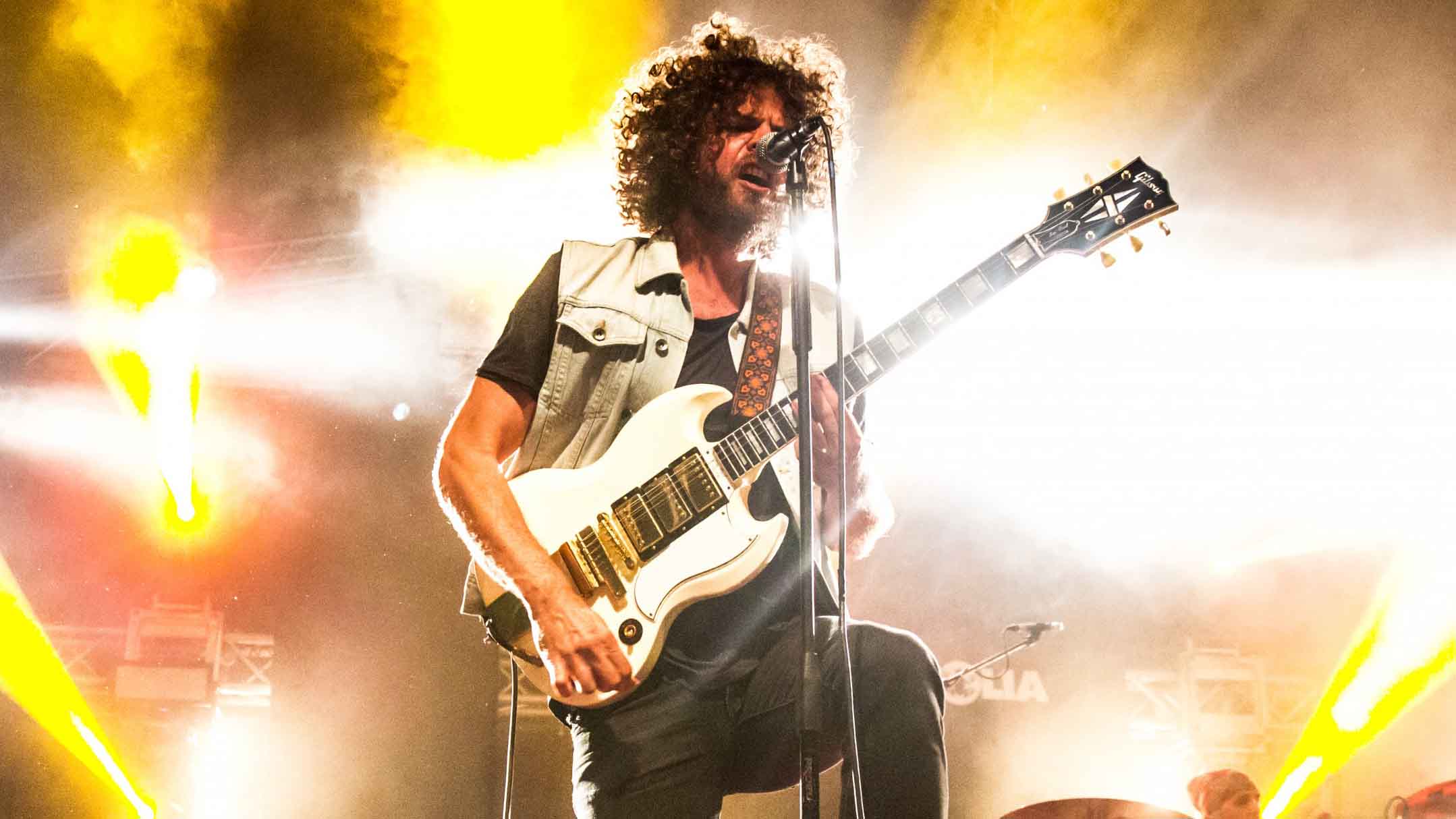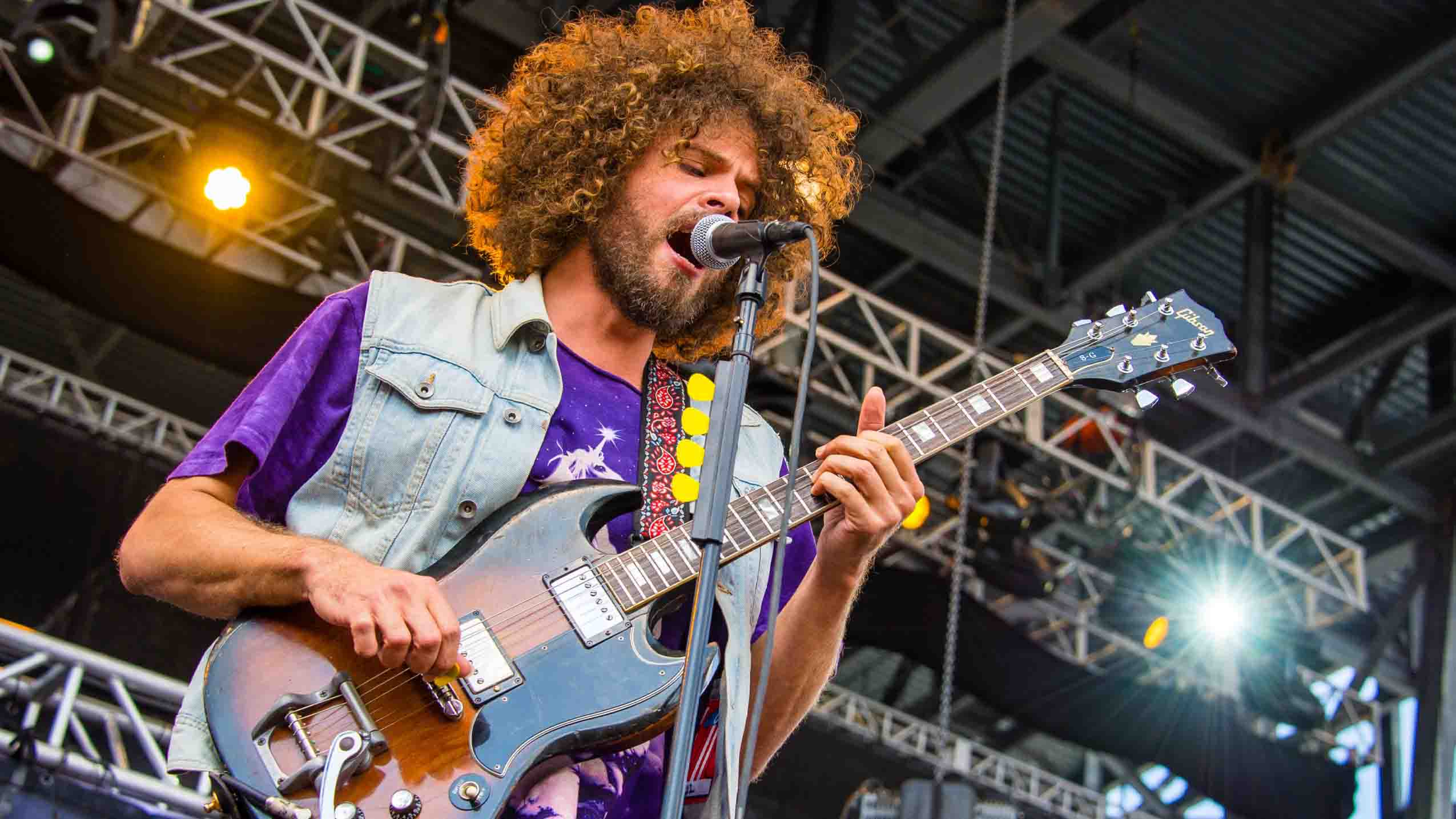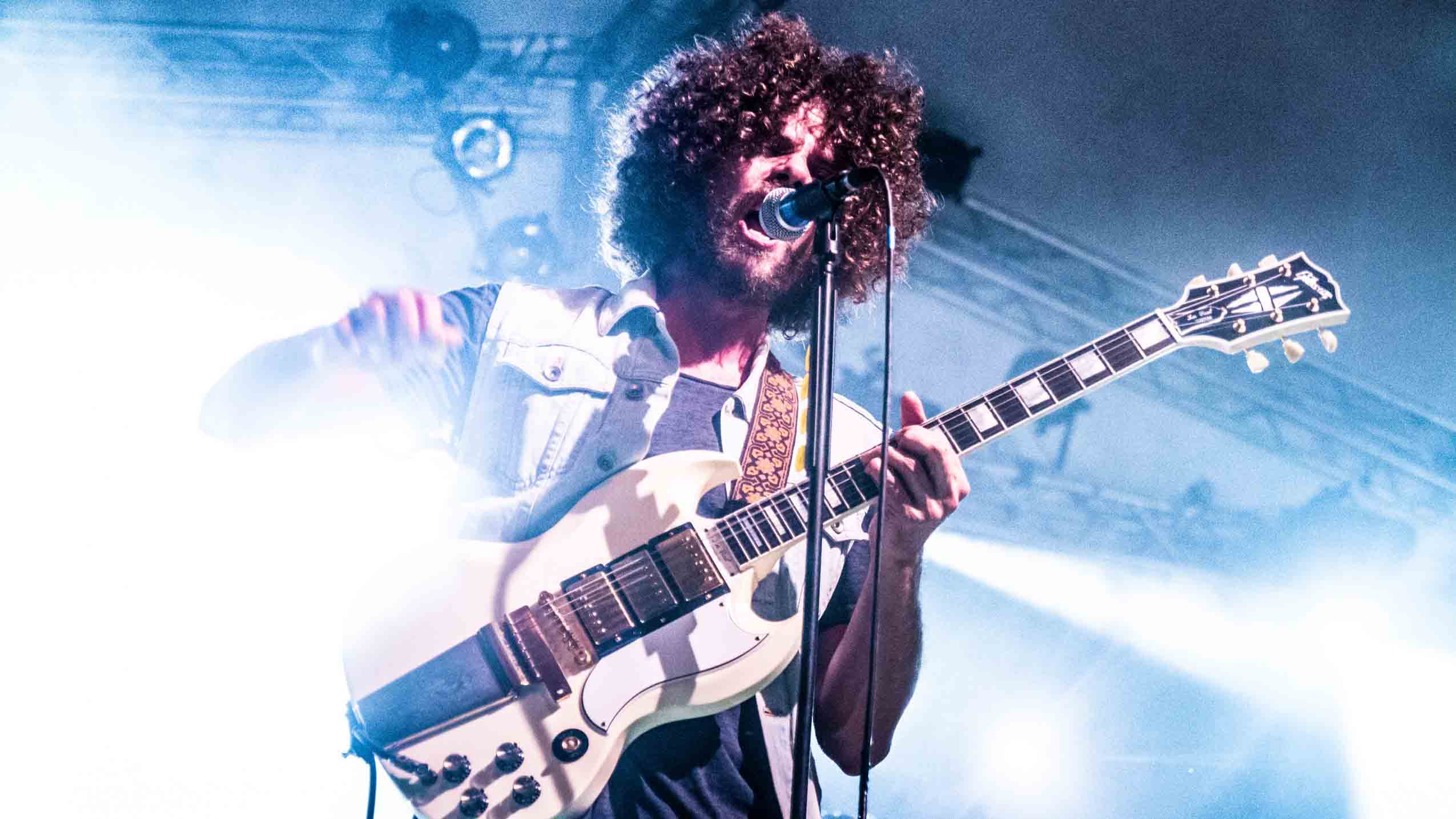Wolfmother's Andrew Stockdale on the band's debut album: "I was old enough to know not to blow the opportunity"
The Aussie frontman tells the story behind one of the biggest rock records of the noughties

Introduction
Now celebrating its 10th birthday, Wolfmother’s introduction to the world still stands tall as one of the most successful rock debuts since the millennium. Just think about that for a second. They’d start 2006 as Aussie unknowns fronted by a man with big hair and even bigger riffs. But by the end of the year, they were the hottest property in rock ’n’ roll.
Thanks to their chemical wedding of mid-tempo classic-rock grooves, cerebral progressive musings and even soul-baring folk, it would be a record that forced the world to pay attention.
With anniversary reissues hitting the shelves, singer/guitarist Andrew Stockdale winds back the clock to take us deep inside the album that changed his life…

Giving birth to the 'mother
Can you tell us a little more about what life was like for you as you wrote these songs?
“I was living in an abandoned warehouse in Sydney that artists had taken over. So, I was living there and working as a photographer… It’s bizarre, one of the people I took photos of was in a band. And he asked me if I wanted to support his band.
“I had given him the original demo of Woman and a few other songs. He offered me a gig as a solo artist, and that was when I got Chris [Ross, bass] and Myles [Heskett, drums] on board. That was the genesis of Wolfmother, so to speak. It’s funny how a different artform can lead to starting a band!”
And what were those early jams like?
“I had this space and we’d meet up there two or three times a week. We’d just try out a few riffs and jam, just play things again and again until we felt we had an arrangement that we thought was good. Not that we knew what an arrangement even was back then! We were just throwing bits together that we thought sounded good, that was it.
“I didn’t exactly have a job. I was completely broke with, like, three bucks to my name. I went into this shopping centre and filled out a form where I said I was a photographer earning $80,000 AUD a year! So they gave me this credit card that I could use in the mall… I would literally have breakfast, lunch and dinner in this same cafe, ha ha! And that was where I bought the Hewlett Packard computer we made our EP on, using some software called Cool Edit. But that EP went gold within two weeks of coming out. I paid off that credit card, though!”

"The Mozart of guitar tones"
Can you tell us a little more about the gear you were using back then?
“When we started I had this Chinese replica SG, Chris was playing a Rickenbacker and Myles was using an old 60s Gretsch kit. We had no idea all these instruments were like the classic combination for all the great bands.
“I then bought a 70s Standard SG, plus the green Russian Big Muff and I was using this Roland amp to begin with. After that, I bought a Moody, which is like an Australian copy of the Fender Bassman. The Moody blew up on the first show of our headline tour and the SG got smashed into about five pieces on my first flight to LA…”
So, what did you end up using on the album?
“Then I bought a '73 SG from Black Market Music in LA, which I used for the album, and luckily, I still have that one! And amp-wise, we used a lot on the debut: vintage Laneys, Hiwatts, Marshall Plexis, Oranges – 30-watt, 200-watt, I can’t even remember…
“There must have been about 10 amps ready to go at all times. The producer would just patch in different heads at different points, one for the verse, another for the chorus. You can probably recognise the Hiwatt feedback during Joker & The Thief. A lot of it was pure luck; I’d just play whatever was put in front of me!”
And it sounds like a lot of pedals were used, too…
“There wasn’t much in Australia apart from Boss pedals back then; I used to buy loads whenever we visited the States or the UK. So, we’d go to all the shops in LA and New York and that’s when I found the Electro-Harmonix Micro Synthesizer, which you can hear on Apple Tree...
“I have to give credit to [producer] Dave Sardy, because it was his gear and he knew exactly how to get the sounds. I asked him to make this album like the Mozart of guitar tones, everything always changing through different amps and pedals. That was the mission statement for the record and there was one table with about 50 pedals on it.
“We’d hook up the vintage Micro Synthesizers, back from when they used to be massive, like two squared feet, colourful pedals. We daisy-chained about three on some songs! We used a phaser on the intro for Joker; I think people should be able to pick that one up pretty easily.
“And as for the acoustic we used, it was an old 60s Gibson – you can hear it on Where Eagles Have Been. It sounds really hollow and small, with this cardboard box kinda tone. I think I bought it for 600 bucks in LA. That was my first shot at buying decent vintage guitars!”
Though Led Zeppelin and Black Sabbath get mentioned a lot, it feels like there's a lot more than that going on stylistically, with influences ranging from Nick Drake to The Beatles…
“It’s nice to hear that for a change! On Vagabond, that fingerpicking style has a Nick Drake vibe, and songs like Forest Of Note carry an influence more like The Beatles. Trans Am were another influence on us. They played a pub round the corner from where we lived and that gig really influenced us to play heavier and really own that heavy prog style.
“There were also quirky 60s bands like Rocket Science, a small Aussie band, but you can hear their influence on Mind’s Eye. Any band we saw back then would have probably influenced in some way. We were listening to a lot of Syd Barrett during our early shows, just driving around with that and The Desert Sessions on the stereo.”

(Wo)man of the world
What was the moment you realised Wolfmother had become the hottest rock ’n’ roll band of the time?
“For lack of a better way of putting it, I guess it’s when girls start finding you attractive and paying you more attention! Also, when famous iconic legendary people like Lars Ulrich start turning up to your little gigs. I’d be like, ‘I had no idea this person even knew I existed, but they’re at our gig hanging out and having a drink with us!’ And this was all pre-Instagram, Facebook and social media… when famous people start coming to your gigs, you’ve made it!
“I’ve been in bands since I was 18. Weird shoegaze bands, all sorts… so I was 27 when Wolfmother started. I think I was old enough to know not to blow the opportunity. I wanted to give it a good shot, you know? I had the patience and the vision… or at least it feels that way looking back. Who knows with these things, but it worked out!”
And finally, what’s the secret behind all of those earth-rumbling riffs?
“My advice is keep it simple, don’t put too many notes in there and trip over yourself. Try to find the groove and make a statement in the strongest possible way. Dig deep and head into an almost meditative state. Find that sweet spot and play in the pocket… people will connect with it.”
Amit has been writing for titles like Total Guitar, MusicRadar and Guitar World for over a decade and counts Richie Kotzen, Guthrie Govan and Jeff Beck among his primary influences. He's interviewed everyone from Ozzy Osbourne and Lemmy to Slash and Jimmy Page, and once even traded solos with a member of Slayer on a track released internationally. As a session guitarist, he's played alongside members of Judas Priest and Uriah Heep in London ensemble Metalworks, as well as handling lead guitars for legends like Glen Matlock (Sex Pistols, The Faces) and Stu Hamm (Steve Vai, Joe Satriani, G3).
